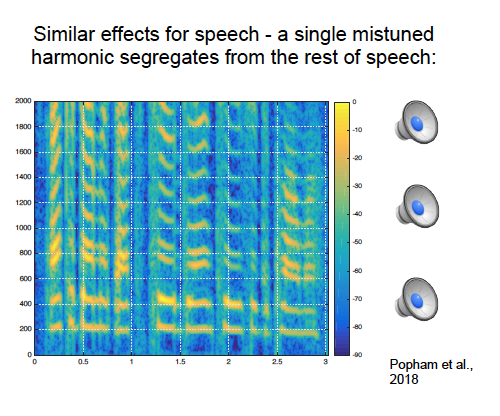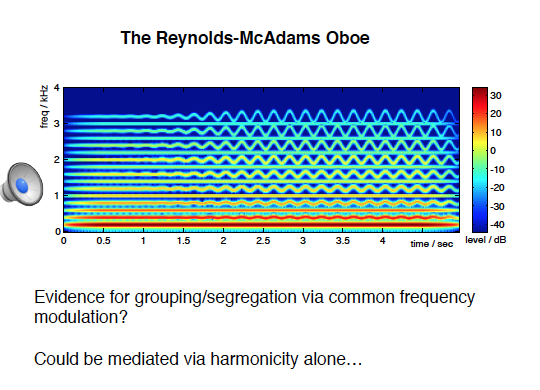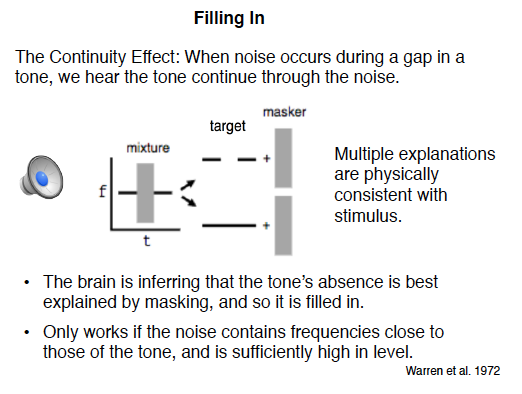Auditory illusion lab
We have listed illusions below that illustrate many principles of auditory scene analysis. One aspect is sequential grouping, when sound components are grouped together across time to form a melody or "stream", and segregated from other streams. Simultaneous grouping deals with the grouping of sound components that occur at the same time but differ in frequency. Some illusions involve the auditory system "filling-in" what happens to a quiet sound that is "masked" by a louder sound. Most existing scene analysis demos use relatively simple tones and noises, but these demonstrations extend ASA research to more complex sounds. You can make almost all of these illusions with the kinds of tones and noises you've generated in your previous problem sets. To give you the tools to approach the others, we've got extra code and other information on this resources page.

|
1. Basic streaming Illusion, paper (PDF pages 19-25/page numbers 1-13, including Fig 2.7) |
|
not from class
|
2. Streaming depends on context Illusion 1 (paper), Illusion 2 (paper) |
  |
3. Mistuned harmonic Basic mistuned harmonic illusion (paper) Mistuned harmonics in speech demos (paper) |

|
4. Onset and offset Illusion (paper) |
  |
5. Reynolds-McAdams Oboe demo (related paper discussed in class) |

|
6. Embedded repetition Demo page (paper) |

|
7. Binaural masking level difference Illusion (paper) |
|
a)  b)  c)  d)  |
8. Temporal continuity Continuity illusions with simple sounds (paper): a) Continuity of tones b) Continuity of noise Variants with natural sounds: c) Continuity of sound texture (paper) d) Continuity of speech (paper) |
|
not from class
|
9. Sequential grouping of notes played by musical instruments Xylophone demos (compare demo 7 vs. 9) & spectral peak demo (paper) |
|
not from class |
10. Sine wave speech: an interesting example of simultaneous grouping Illusion (intro to sine wave speech, paper) |
